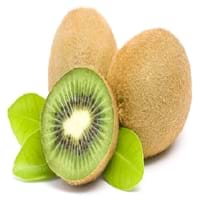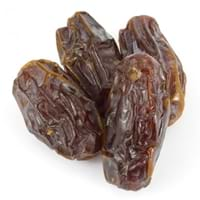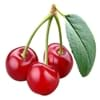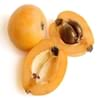Health Benefits
Asthma treatment, Heart care, Prevents constipation, Treatment of skin Diseases
Cancer prevention, Cures gastro-intestinal troubles, Diarrhea treatment, Heart care, Heat stroke treatment, Improves muscular strength, Prevents constipation, Prevents nerve damage, Strengthening of bones
General Benefits
Boosts immune system, Controls blood pressure, Eye care, Helps in weight loss
Boosts immune system, Maintains healthy cholesterol level, Strengthens bones
Skin Benefits
Brightens and lightens complexion, Heals sunburn, Reduces wrinkles, Skin rejuvenation, Treatment of acne, Treatment of dark spots, Treatment of skin diseases
Anti-aging benefits, Brightens and lightens complexion, Reduces wrinkles, Treatment of skin diseases
Hair Benefits
Prevents hair loss, Promotes longer and healthier hair, Treatment of dandruff
Prevents hair loss, Promotes longer and healthier hair, Protects hair, Regulates hair growth
Allergy Symptoms
Abdominal pains, Anaphylaxis, Breathing difficulty, Itching in tongue and other parts of mouth, Itching sensation in throat, Swelling of mouth, tongue or lips, Vomiting
Redness of eyes, Runny nose, Sneezing, Watery eyes
Side Effects
Allergic reaction, Diarrhoea, Skin rash, Possibly unsafe during pregnancy
Allergic reaction, Diarrhoea, Intestinal gas, Stomach pain, Tooth decay, Weight gain
Best Time to Eat
Any time except an hour after meal, Don't consume at night and before bed
Any time except an hour after meal, Don't consume at night and before bed
Vitamin B5 (Pantothenic Acid)
Vitamin C (Ascorbic Acid)
Vitamin K (Phyllochinone)
Calories in Fresh Fruit with Peel
Calories in Fresh Fruit without Peel
Not Available
Not Available
Calories in Frozen Form
Not Available
Not Available
Calories in Canned Form
Not Available
Season
Spring, Summer, Winter
Spring, Summer
Varieties
Zhong Hua, Jing Li, Ruan Zao, Mao Hua and Huang Yan
Barhi, Dayri, Deglet Noor, Halawy, Khadrawy, Medjool, Thoory and Zahidi
Color
Brown, Green
Black, Brown, Red, Yellow
Taste
Sour-Sweet, Tangy
Sweet
Soil Type
Well-drained
Clay, Loam, Sand
Climatic Conditions
Cold, Sunny
Hot, Warm
Facts about
- The name Kiwi is due to the resemblance with 'Kiwi' bird.
- Animals like monkeys and deer also consume Kiwifruit.
- Originated in china, this fruit is also called as 'Chinese gooseberry.'
- Date is known as the tree of life in Middle east.
- Date palms cover 3% of the earth's total farmlands.
- Scholars believe that date (and not apple) was the real fruit mentioned in the Bible's Garden of Eden.
Spirits
Yes
Not Available
Cocktails
Yes
Not Available
Other Countries
Chile, France, Greece, Iran, Japan, New Zealand, Portugal, Turkey, United States of America
Algeria, Iraq, Oman, Pakistan, South Africa, United Arab Emirates
Top Importer
United States of America
India
Top Exporter
New Zealand
United Arab Emirates
Botanical Name
Actinidia deliciosa
Phoenix Dactylifera
Synonym
Not Available
Not Available
Subkingdom
Tracheobionta
Tracheobionta
Division
Magnoliophyta
Magnoliophyta
Class
Magnoliopsida
Liliopsida
Subclass
Dillenhidae
Arecidae
Family
Actinidiaceae
Arecaceae
Species
A. deliciosa
P. dactylifera
Difference Between Green Kiwi and Date
We might think that Green Kiwi and Date are similar with respect to nutritional value and health benefits. But the nutrient content of both fruits is different. Green Kiwi and Date Facts such as their taste, shape, color, and size are also distinct. The difference between Green Kiwi and Date is explained here.
The amount of calories in 100 gm of fresh Green Kiwi and Date with peel is 61.00 kcal and 282.00 kcal and the amount of calories without peel is Not Available and Not Available respectively. Thus, Green Kiwi and Date belong to and category.These fruits might or might not differ with respect to their scientific classification. The order of Green Kiwi and Date is Ericales and Arecales respectively. Green Kiwi belongs to Actinidiaceae family and Date belongs to Arecaceae family. Green Kiwi belongs to Actinidia genus of A. deliciosa species and Date belongs to Phoenix genus of P. dactylifera species. Beings plants, both fruits belong to Plantae Kingdom.









